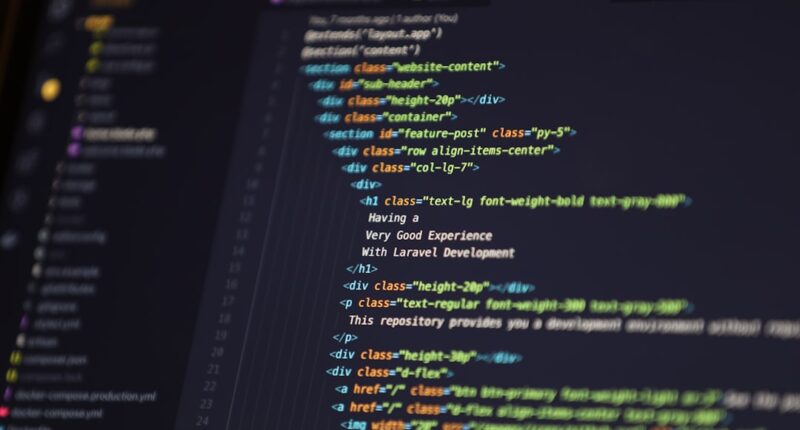Blockchain technology serves as the backbone of cryptocurrencies and decentralized applications, revolutionizing how data is stored, shared, and secured. At its core, a blockchain is a distributed ledger that records transactions across multiple computers in such a way that the registered transactions cannot be altered retroactively. This immutability is achieved through cryptographic hashing, which ensures that any attempt to change a block would require altering all subsequent blocks, making it computationally impractical.
The decentralized nature of blockchain eliminates the need for a central authority, allowing for peer-to-peer interactions that enhance transparency and trust among users. This technology has far-reaching implications beyond cryptocurrencies, including supply chain management, healthcare, and voting systems, where secure and transparent record-keeping is paramount. Moreover, the consensus mechanisms employed by various blockchain networks, such as Proof of Work (PoW) and Proof of Stake (PoS), play a crucial role in maintaining the integrity of the blockchain.
These mechanisms ensure that all participants in the network agree on the validity of transactions before they are added to the blockchain. This decentralized consensus not only enhances security but also democratizes the process of transaction validation, reducing the risk of fraud and manipulation. As organizations increasingly recognize the potential of blockchain technology to streamline operations and reduce costs, understanding its fundamental principles becomes essential for developers and businesses alike.
The ability to leverage blockchain for innovative solutions is transforming industries and creating new opportunities for growth and efficiency.
Key Takeaways
- Blockchain technology is a decentralized, distributed ledger that records transactions across multiple computers.
- Smart contract development involves creating self-executing contracts with terms directly written into code.
- NFT standards and protocols, such as ERC-721 and ERC-1155, are essential for creating and managing non-fungible tokens.
- Solidity is the primary programming language for writing smart contracts on the Ethereum blockchain.
- NFT marketplaces and platforms like OpenSea and Rarible are key for buying, selling, and trading non-fungible tokens.
- Web3 and decentralized applications (DApps) utilize blockchain technology to create trustless, transparent, and secure applications.
- Cryptography and security are crucial for protecting blockchain networks and ensuring the integrity of transactions.
- Proficiency in IPFS and file storage systems is important for securely storing and retrieving data on decentralized networks.
Proficiency in Smart Contract Development
Smart contracts are self-executing contracts with the terms of the agreement directly written into code. They operate on blockchain platforms, automatically enforcing and executing contractual agreements when predetermined conditions are met. This automation reduces the need for intermediaries, thereby minimizing costs and increasing efficiency in various transactions.
Proficiency in smart contract development involves understanding how to design, implement, and test these contracts to ensure they function as intended. Developers must be adept at identifying potential vulnerabilities and ensuring that the contracts are secure against attacks, such as reentrancy or overflow errors. The ability to create robust smart contracts is essential for building decentralized applications (DApps) that rely on these agreements for their functionality.
Furthermore, smart contracts can be utilized across a wide range of applications, from financial services to supply chain management. For instance, in decentralized finance (DeFi), smart contracts facilitate lending, borrowing, and trading without the need for traditional financial institutions. This shift not only democratizes access to financial services but also introduces new risks and challenges that developers must navigate.
Understanding the legal implications of smart contracts is also crucial, as jurisdictions around the world grapple with how to regulate these digital agreements. As the demand for smart contract solutions continues to grow, developers who can create secure, efficient, and legally compliant contracts will be at the forefront of this technological revolution.
Knowledge of NFT Standards and Protocols

Non-fungible tokens (NFTs) have emerged as a groundbreaking application of blockchain technology, enabling the creation of unique digital assets that represent ownership of specific items or content. Knowledge of NFT standards and protocols is essential for developers looking to create or interact with NFTs effectively. The most widely used standards include ERC-721 and ERC-1155 on the Ethereum blockchain.
ERC-721 defines a standard interface for non-fungible tokens, ensuring that each token is unique and can be individually owned. In contrast, ERC-1155 allows for the creation of both fungible and non-fungible tokens within a single contract, providing greater flexibility for developers. Understanding these standards is crucial for ensuring compatibility with various marketplaces and platforms where NFTs are bought, sold, or traded.
In addition to technical standards, developers must also be aware of the broader ecosystem surrounding NFTs, including marketplaces like OpenSea and Rarible. These platforms facilitate the buying and selling of NFTs, often incorporating features such as auctions and royalties for creators. Knowledge of how these marketplaces operate can inform developers’ decisions when designing their own NFT projects or integrating existing ones into their applications.
Furthermore, as the NFT space continues to evolve, staying updated on emerging standards and protocols will be vital for maintaining relevance in this fast-paced environment. The ability to navigate both the technical and market aspects of NFTs will empower developers to create innovative solutions that harness the full potential of this exciting technology.
Expertise in Solidity Programming Language
Solidity is the primary programming language used for writing smart contracts on the Ethereum blockchain. Mastery of Solidity is essential for developers aiming to create decentralized applications or engage in smart contract development. The language is designed to be high-level and statically typed, making it accessible while still providing powerful features for complex contract logic.
Developers must understand key concepts such as inheritance, libraries, and interfaces to effectively utilize Solidity’s capabilities. Additionally, familiarity with common design patterns in Solidity can help developers avoid pitfalls and create more secure contracts. As Ethereum remains one of the most popular platforms for DApps and smart contracts, expertise in Solidity is a highly sought-after skill in the blockchain development community.
Moreover, as the Ethereum ecosystem evolves with upgrades like Ethereum 2.0 and Layer 2 solutions, understanding how these changes impact Solidity development is crucial. Developers must stay informed about best practices for optimizing gas usage and ensuring contract efficiency to provide users with a seamless experience. Furthermore, testing frameworks such as Truffle and Hardhat are essential tools for Solidity developers, allowing them to write tests for their contracts before deployment.
This testing phase is critical for identifying vulnerabilities and ensuring that contracts behave as expected under various conditions. As the demand for skilled Solidity developers continues to rise, those who can demonstrate a deep understanding of both the language itself and its practical applications will be well-positioned in this dynamic field.
Familiarity with NFT Marketplaces and Platforms
The rise of non-fungible tokens (NFTs) has given birth to a vibrant marketplace ecosystem where digital assets can be bought, sold, or traded. Familiarity with NFT marketplaces and platforms is essential for developers looking to create or integrate NFT functionalities into their applications. Popular platforms like OpenSea, Rarible, and Foundation each have unique features that cater to different audiences and types of digital assets.
Understanding how these marketplaces operate—including their fee structures, user interfaces, and community engagement strategies—can significantly influence a developer’s approach to building NFT projects. For instance, some platforms focus on art and collectibles while others may cater to gaming or virtual real estate; knowing where a project fits within this landscape can enhance its visibility and success. Additionally, developers must consider how their NFTs will interact with these marketplaces in terms of minting processes, listing procedures, and royalty structures.
Many marketplaces offer APIs that allow developers to integrate their NFT projects seamlessly into existing platforms or create custom solutions tailored to specific needs. This integration can enhance user experience by providing easy access to buying or selling NFTs directly from an application interface. Furthermore, as regulations around NFTs continue to evolve globally, staying informed about compliance requirements will be crucial for developers operating in this space.
By understanding both the technical aspects of NFT creation and the marketplace dynamics, developers can position themselves strategically within this rapidly growing industry.
Mastery of Web3 and Decentralized Applications (DApps)

Web3 represents a significant shift in how users interact with the internet, enabling decentralized applications (DApps) that operate on blockchain technology rather than traditional centralized servers. Mastery of Web3 principles is essential for developers aiming to build applications that prioritize user control over data privacy and security.
Decentralized Applications and Smart Contracts
Unlike conventional web applications that rely on centralized databases, DApps leverage smart contracts on blockchains like Ethereum to facilitate transactions directly between users without intermediaries. This decentralization not only enhances security but also fosters trust among users who can verify transactions independently on the blockchain.
Key Components of the Web3 Ecosystem
Developing DApps requires an understanding of various components within the Web3 ecosystem, including wallets like MetaMask that allow users to interact with decentralized networks securely. Developers must also be familiar with libraries such as Web3.js or Ethers.js that facilitate communication between DApps and blockchain networks.
User Experience and Adoption
User experience plays a critical role in DApp adoption; thus, developers should focus on creating intuitive interfaces that simplify interactions with complex blockchain functionalities. As Web3 continues to gain traction across industries—from finance to gaming—developers who can effectively harness its potential will be at the forefront of this technological revolution.
Understanding of Cryptography and Security
Cryptography is fundamental to ensuring security within blockchain networks and decentralized applications (DApps). A solid understanding of cryptographic principles is essential for developers working in this space as it underpins everything from transaction validation to data integrity. Cryptographic techniques such as hashing algorithms (e.g., SHA-256) ensure that data remains immutable once recorded on a blockchain while public-key cryptography enables secure transactions between parties without revealing sensitive information.
Developers must also be aware of common vulnerabilities associated with cryptographic implementations—such as replay attacks or man-in-the-middle attacks—and how to mitigate these risks through best practices. In addition to cryptography itself, security considerations extend beyond just protecting data; they encompass safeguarding smart contracts from exploits that could lead to financial losses or reputational damage. Developers should conduct thorough audits of their codebase using both automated tools and manual reviews to identify potential vulnerabilities before deployment.
Furthermore, staying informed about emerging threats within the blockchain space—such as phishing attacks targeting wallet users or exploits targeting DeFi protocols—will enable developers to proactively address security concerns in their projects. By prioritizing cryptography and security throughout the development process, developers can build resilient applications that inspire confidence among users.
Proficiency in IPFS and File Storage Systems
InterPlanetary File System (IPFS) is a revolutionary protocol designed for storing and sharing files in a decentralized manner across a peer-to-peer network. Proficiency in IPFS is increasingly important for developers working with non-fungible tokens (NFTs) or decentralized applications (DApps) that require reliable file storage solutions without relying on centralized servers. Unlike traditional file storage systems that use location-based addressing (where files are accessed via specific URLs), IPFS employs content-based addressing—allowing files to be retrieved based on their unique cryptographic hashes.
This approach not only enhances data integrity but also ensures that files remain accessible even if individual nodes go offline. Moreover, integrating IPFS into DApps provides several advantages over conventional storage methods; it reduces costs associated with hosting while enhancing resilience against censorship or data loss due to server failures. Developers must understand how to effectively upload files to IPFS using tools like IPFS Desktop or command-line interfaces while also considering best practices for managing file versions and metadata associated with stored assets.
Additionally, as more projects leverage IPFS for NFT storage—such as artwork or music files—understanding how these assets interact with blockchain protocols becomes crucial for ensuring seamless user experiences when minting or trading NFTs. By mastering IPFS alongside other decentralized technologies, developers can create innovative solutions that push the boundaries of what’s possible in today’s digital landscape.
FAQs
What are NFTs?
NFTs, or non-fungible tokens, are digital assets that represent ownership or proof of authenticity of a unique item or piece of content, such as art, music, videos, and more, using blockchain technology.
What skills are important for NFT developers?
Important skills for NFT developers include proficiency in blockchain technology, smart contract development, understanding of NFT standards such as ERC-721 and ERC-1155, knowledge of decentralized finance (DeFi) protocols, and familiarity with various programming languages such as Solidity, JavaScript, and Python.
What tools are commonly used by NFT developers?
Commonly used tools by NFT developers include blockchain platforms like Ethereum, development frameworks like Truffle and Hardhat, NFT marketplaces such as OpenSea and Rarible, and wallet integrations like MetaMask and WalletConnect.
How can someone start a career as an NFT developer?
To start a career as an NFT developer, one can begin by learning the necessary skills and tools through online courses, tutorials, and resources. Building a strong understanding of blockchain technology, smart contracts, and NFT standards is essential. Additionally, gaining practical experience by working on NFT projects and contributing to the NFT community can help in establishing a career in this field.





